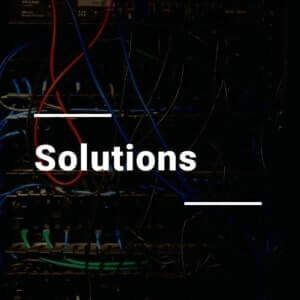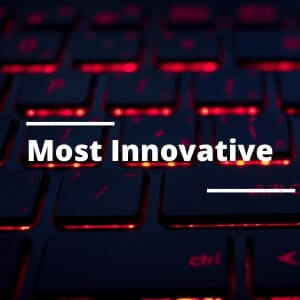 When someone mentions “supply chain management” to you, what’s the first thing that comes to mind? For many of us already embedded in this industry, it’s not just about moving goods from Point A to Point B.
When someone mentions “supply chain management” to you, what’s the first thing that comes to mind? For many of us already embedded in this industry, it’s not just about moving goods from Point A to Point B.
It’s a complex, interconnected web of processes that work together to ensure that a product goes from being an idea to landing in the hands of the end consumer. In my years in supply chain management, I’ve witnessed its evolution firsthand—from being a back-end operational function to becoming a strategic driver of innovation and business success.
In this blog, I’ll walk you through the components of supply chain management and provide a structural overview of what makes it such a fascinating, yet intricate, field. Along the way, I’ll also be highlighting key areas professionals like us should focus on in 2025 and where innovation is unlocking new potential.
What is Supply Chain Management?
At its core, supply chain management is the management of the flow of goods, services, and information from the initial sourcing of raw materials to the delivery of finished products to consumers.
But it’s so much more than logistics. SCM is about strategy, collaboration, and leveraging technology to deliver the right product, to the right place, at the right time while optimizing costs, improving quality, and ensuring sustainability.
Key Components of the Supply Chain
Sourcing and Procurement
o What it Entails: This is where it all begins. Sourcing involves identifying and selecting suppliers who provide the raw materials or components needed for production. Procurement focuses on negotiating contracts, ensuring quality standards, and managing supplier relationships.
o 2025 Insights: In 2025, digital procurement platforms powered by AI and machine learning are transforming sourcing. Predictive analytics can identify supplier risks, while blockchain ensures transparency and compliance in sourcing. Professionals should focus on aligning procurement strategies with ESG (Environmental, Social, Governance) goals, ensuring sustainability and ethical sourcing.
o Key Focus: Build resilient supplier networks, negotiate long-term contracts, and explore nearshoring options to mitigate geopolitical risks.
Inbound Inventory Management
o What it Entails: This stage manages the transportation, storage, and tracking of raw materials or components as they move into manufacturing facilities.
o 2025 Insights: IoT sensors and real-time tracking tools are revolutionizing inbound logistics. By integrating data from GPS trackers and warehouse systems, companies can streamline operations and reduce delays caused by inefficiencies.
o Key Focus: Use data analytics to forecast inventory needs, minimize lead times, and collaborate with logistics providers to ensure seamless movement of goods.
Raw Material Quality Assessment
o What it Entails: Before production, raw materials must undergo quality checks to ensure they meet the required standards.
o 2025 Insights: AI-powered inspection systems and automated quality control tools are becoming standard. These systems reduce manual intervention and ensure that substandard materials are identified before entering the production line.
o Key Focus: Leverage AI tools to maintain consistency and ensure compliance with industry regulations.
Manufacturing
o What it Entails: This is where raw materials are transformed into finished goods. Manufacturing is the heart of the supply chain.
o 2025 Insights: Smart factories equipped with IoT, robotics, and AI are the future. Automation is reducing costs and increasing efficiency, while predictive maintenance ensures minimal downtime.
o Key Focus: Embrace Industry 4.0 technologies, prioritize sustainable manufacturing practices, and optimize energy consumption.
Product Quality Assessment
o What it Entails: Post-production quality checks ensure that finished products meet customer expectations and regulatory standards.
o 2025 Insights: Computer vision and machine learning tools are enhancing quality assessments by detecting defects faster and more accurately than traditional methods.
o Key Focus: Integrate AI-powered tools for comprehensive quality checks and ensure feedback loops for continuous improvement.
Outbound Inventory Management
o What it Entails: This stage involves managing the storage and distribution of finished goods.
o 2025 Insights: Automated warehouse management systems (WMS) and robotics are optimizing inventory handling and order fulfillment. Dark warehouses (fully automated facilities) are becoming a reality in 2025.
o Key Focus: Use data to optimize storage, implement just-in-time (JIT) inventory strategies, and invest in warehouse automation.
Distribution
o What it Entails: Distribution is about getting products from warehouses to wholesalers, retailers, or directly to customers.
o 2025 Insights: Digital twin technology—creating virtual replicas of physical supply chains—is enabling real-time distribution management. Autonomous delivery vehicles and drones are also becoming more common.
o Key Focus: Optimize distribution routes, use AI for demand forecasting, and explore partnerships with third-party logistics (3PL) providers.
Wholesaling and Retailing
o What it Entails: Products reach wholesalers and retailers before making their way to consumers. Effective communication between all parties ensures adequate stock levels and smooth operations.
o 2025 Insights: Omnichannel retailing, where customers can shop seamlessly across online and offline platforms, is reshaping retail supply chains.
o Key Focus: Leverage inventory management systems to maintain accurate stock levels and ensure agility in responding to customer demands.
Last-Mile Delivery
o What it Entails: The final leg of the supply chain, where products are delivered to the end consumer.
o 2025 Insights: Last-mile delivery is being disrupted by technology. Drones, delivery robots, and crowd-sourced delivery models (like Uber for packages) are enhancing speed and efficiency.
o Key Focus: Optimize delivery routes with AI, invest in green delivery solutions, and enhance customer communication for transparency.
Reverse Logistics
o What it Entails: The process of returning products from consumers to manufacturers or retailers for refunds, repairs, or recycling.
o 2025 Insights: Circular supply chains are gaining traction. Reverse logistics is no longer just about returns but also about recycling and reusing materials to support sustainability.
o Key Focus: Invest in reverse logistics systems and collaborate with partners to enable circular economy practices.
Where Innovation Will Drive Change in 2025
- AI and Machine Learning: From demand forecasting to real-time inventory optimization, AI will be a game-changer across the supply chain.
- Blockchain: Ensuring transparency, reducing fraud, and verifying ESG compliance will make blockchain a key tool.
- Automation: From autonomous vehicles to smart warehouses, automation will enhance efficiency at every stage.
- Sustainability: Sustainable practices, such as green energy solutions and waste reduction, will be a top priority.















